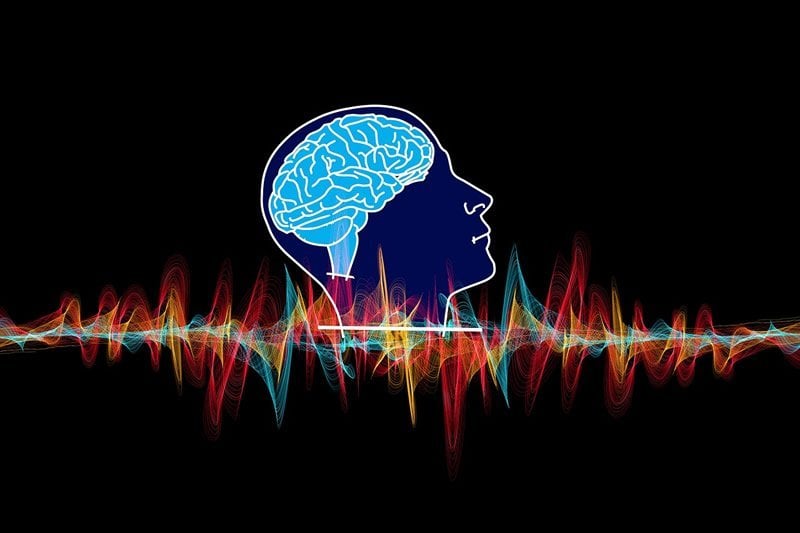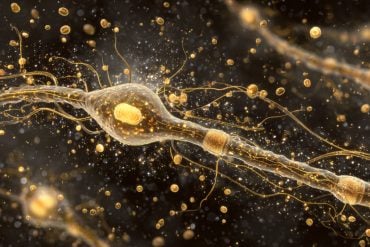Summary: A new machine-learning algorithm that analyzes EEG data can identify reliable and robust neural signatures associated with antidepressant treatment response.
Source: NIH/NIMH
Researchers have discovered a neural signature that predicts whether individuals with depression are likely to benefit from sertraline, a commonly prescribed antidepressant medication. The findings, published in Nature Biotechnology, suggest that new machine learning techniques can identify complex patterns in a person’s brain activity that correlate with meaningful clinical outcomes. The research was funded by the National Institute of Mental Health (NIMH), part of the National Institutes of Health.
“There is a great need in psychiatry today for objective tests that can inform treatment and go beyond some of the limitations of our diagnostic system. Our findings are exciting because they reflect progress made toward this clinical goal, and they also show the potential of bringing sophisticated data analytic methods to psychiatry,” explained senior author Amit Etkin, M.D., Ph.D., a professor of psychiatry and behavioral sciences at Stanford University and CEO of Alto Neuroscience, Los Altos, California.
Major depression is one of the most common mental disorders, affecting about 7% of adults in the U.S. in 2017, but the symptoms experienced can vary from person to person. While some may experience many of the characteristic features–including persistent sad mood, feelings of hopelessness, loss of pleasure, and decreased energy–others may experience only a few. There are several evidence-based options available for treating depression, but determining which treatment is likely to work best for a specific person can be a matter of trial and error.
Previous research has suggested that specific components of brain activity, as measured by resting-state electroencephalography (EEG), could yield insight into how people will respond to certain treatments. However, researchers have yet to develop predictive models that can differentiate between response to antidepressant medication and response to placebo and that can also predict outcomes for individual patients. Both features are essential for the neural signature to have clinical relevance.
Etkin, co-senior author Madhukar H. Trivedi, M.D., a professor of psychiatry at the University of Texas Southwestern Medical Center, Dallas, and first author Wei Wu, Ph.D., an instructor at Stanford University, California, drew on insights from neuroscience, clinical science, and bioengineering to build an advanced predictive model. The researchers developed a new machine learning algorithm specialized for analyzing EEG data called SELSER (Sparse EEG Latent SpacE Regression). They hypothesized that this algorithm might be able to identify robust and reliable neural signatures of antidepressant treatment response.
The researchers used SELSER to analyze data from the NIMH-funded Establishing Moderators and Biosignatures of Antidepressant Response in Clinic Care (EMBARC) study, a large randomized clinical trial of the antidepressant medication sertraline, a widely available selective serotonin reuptake inhibitor (SSRI). As part of the study, participants with depression were randomly assigned to receive either sertraline or placebo for eight weeks. The researchers applied SELSER to participants’ pre-treatment EEG data, examining whether the machine learning technique could produce a model that predicted participants’ depressive symptoms after treatment.
SELSER was able to reliably predict individual patient response to sertraline based on a specific type of brain signal, known as alpha waves, recorded when participants had their eyes open. This EEG-based model outperformed conventional models that used either EEG data or other types of individual-level data, such as symptom severity and demographic characteristics. Analyses of independent data sets, using several complementary methods, suggested that the predictions made by SELSER may extend to broader clinical outcomes beyond sertraline response.

In one independent data set, the researchers found that the EEG-based SELSER model predicted greater improvement for participants who had shown partial response to at least one antidepressant medication compared with those who had not responded to two or more medications, in line with the patients’ clinical outcomes. Another independent data set showed that participants who were predicted by SELSER to show little improvement with sertraline were more likely to respond to treatment involving a specific type of non-invasive brain stimulation called transcranial magnetic stimulation (in combination with psychotherapy).
Work is now underway to further replicate these findings in large, independent samples to determine the value of SELSER as a diagnostic tool. According to Etkin, Trivedi, Wu, and colleagues, the present research highlights the potential of machine learning for advancing a personalized approach to treatment in depression.
“While work remains before the findings in our study are ready for routine clinical use, the fact that EEG is a low-cost and accessible tool makes the translation from research to clinical practice more possible in the near term. I hope our findings are part of a tipping point in the field with respect to the impact of machine learning and objective testing,” Etkin concluded.
Source:
NIH/NIMH
Media Contacts:
Anna Mikulak – NIH/NIMH
Image Source:
The image is in the public domain.
Original Research: Closed access
“Antidepressant-responsive brain signature in major depression defined by electroencephalography”. Wei Wu, Yu Zhang, Jing Jiang, Molly V. Lucas, Gregory A. Fonzo, Camarin E. Rolle, Crystal Cooper, Cherise Chin-Fatt, Noralie Krepel, Carena A. Cornelssen, Rachael Wright, Russell T. Toll, Hersh M. Trivedi, Karen Monuszko, Trevor L. Caudle, Kamron Sarhadi, Manish K. Jha, Joseph M. Trombello, Thilo Deckersbach, Phil Adams, Patrick J. McGrath, Myrna M. Weissman, Maurizio Fava, Diego A. Pizzagalli, Martijn Arns, Madhukar H. Trivedi & Amit Etkin.
Nature Biotechnology doi:10.1038/s41587-019-0397-3.
Abstract
Antidepressant-responsive brain signature in major depression defined by electroencephalography
Antidepressants are widely prescribed, but their efficacy relative to placebo is modest, in part because the clinical diagnosis of major depression encompasses biologically heterogeneous conditions. Here, we sought to identify a neurobiological signature of response to antidepressant treatment as compared to placebo. We designed a latent-space machine-learning algorithm tailored for resting-state electroencephalography (EEG) and applied it to data from the largest imaging-coupled, placebo-controlled antidepressant study (n = 309). Symptom improvement was robustly predicted in a manner both specific for the antidepressant sertraline (versus placebo) and generalizable across different study sites and EEG equipment. This sertraline-predictive EEG signature generalized to two depression samples, wherein it reflected general antidepressant medication responsivity and related differentially to a repetitive transcranial magnetic stimulation treatment outcome. Furthermore, we found that the sertraline resting-state EEG signature indexed prefrontal neural responsivity, as measured by concurrent transcranial magnetic stimulation and EEG. Our findings advance the neurobiological understanding of antidepressant treatment through an EEG-tailored computational model and provide a clinical avenue for personalized treatment of depression.






